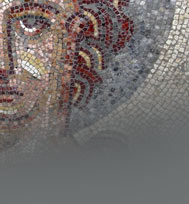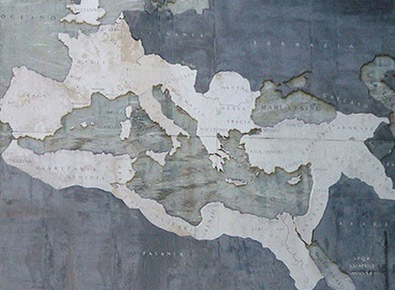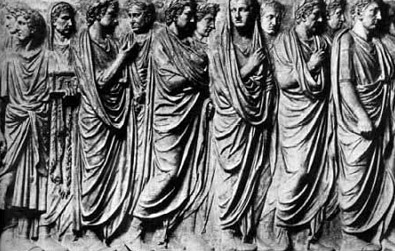

The government of Ancient Rome consisted of three branches. These branches were: the magistrates, senate, and the assemblies and tribunes. The tri-government was known as a tripartite. Leaders knew they had to establish a government that kept citizens happy, otherwise unhappy citizens would overthrow the entire government. When Rome was founded in 753 BC, it was under the control of kings, and not all of them were Roman. Historical records show that the last three kings of Ancient Rome were of Etruscan origin. The last King of Ancient Rome was Lucius Tarquinius Superbus, he was said to be extremely cruel and had many Romans killed. Lucius Tarquinius was so corrupt that he did not even trust his own advisors and had them executed. This was the turning point in Ancient Rome. Ancient Roman nobles no longer wanted corrupt rulers or kings that were not of Roman heritage. Plebeians were common people who called for change in the Ancient Roman government. After the last king of Ancient Rome, the new government was born in 509 BC. This new republic allowed Ancient Roman citizens to elect leaders to govern them, rather than the previous monarch system of the kings.

Patricians were the wealthy land owners and upper class of Ancient
Rome. To control Roman citizen s, patricians made radical changes to
the Ancient Roman government. Patricians created offices that could
only be held by a Roman. This ensured the best intensions for the
people Rome, by the people of Rome. It should be noted that as the
government grew in power and increased in stability, the differences
between the patricians and plebeians started to dissolve; however,
this took some time as the government evolved.
As a result of the fundamental changes made by the aristocrats and
patricians, the government developed into three unique parts:
Magistrates, Senate, and Assemblies and Tribunes. Each part was
responsible for certain duties and ensuring Ancient Rome would
thrive. In the tri-government of Ancient Rome, known as a tripartite
government, each part of the government had its own controls,
rights, and privileges.
The first part of the Ancient Roman government
was made of officials elected into office called Magistrates.
Magistrates were elected each year but they were not allowed to
hold their position indefinitely. The two most powerful magistrates
made a section of advisors called the consuls. In this part
of the government structure, only two consuls were allowed to
hold office. They were responsible for running the city and leading
the military. Two consuls were elected at the same time to ensure
no single Roman consul would become too powerful or corrupt the system.
Below the consuls were other magistrates responsible for a variety
of duties. These magistrates took care of finances and judicial
obligations throughout the Ancient Roman Empire. Some magistrates
were even responsible for entertainment elements such as festivals
and games which Ancient Rome became famous for.
The second part of the Ancient Roman government was a body called the Senate. The Senate consisted of influential and wealthy Ancient Romans that advised Rome s leaders. When the Senate was first created, its purpose was to assist the early Roman kings. The people who worked at the Senate were called senators. Senators held this title for life, unlike magistrates who only could serve for a year. Once Rome s kings were overthrown, the Senate continued to assist the consuls. In early imperial Rome, the Senate was weak until the empire became established. Many of the senators were also magistrates previous to becoming a senator. Since a Magistrate s position was not a lifetime arrangement, many looked to holding a senator position after their magistrate duties were over. This is why many Magistrates would not upset the Senate as this was potentially their future political position.

The third part of the Ancient
Roman government consisted of Assemblies and Tribunes. This part
of the government protected the common people of Ancient Rome.
The first branch known as Assemblies composed of the plebeians
and the patricians. Their main job was to elect the magistrates
responsible for running the Roman Empire.
In the second branch known as the tribunes consisted of elected
officials. Tribunes were elected by the plebeians and could veto
actions by other officials. With the ability to veto other
officials, this made tribunes very powerful in the Ancient Roman
government. To keep the tribunes from becoming too powerful,
they were allowed only one year in office.
| Brances of the Government | ||
| Magistrates | Senate | Assemblies and Tribunes |
|
|
|